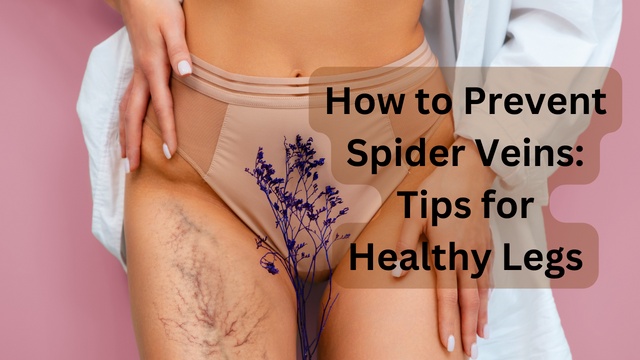Introduction
Spider veins, those tiny, twisted blood vessels that can appear on your legs, are not just a cosmetic concern. They can lead to discomfort and even pain. Fortunately, there are effective strategies to prevent them and keep your legs looking and feeling their best. In this comprehensive guide, we will explore various tips for healthy legs and how to prevent spider veins. You'll find a wealth of knowledge, backed by expert insights and personal experiences.
Understanding Spider Veins
Spider veins, also known as telangiectasias, are small, dilated blood vessels that appear close to the surface of the skin. They often look like a web of red, blue, or purple lines, and while they are generally harmless, they can be unsightly and cause minor discomfort.
Preventing Spider Veins is crucial, and we'll delve into various methods to achieve this.
How to Prevent Spider Veins: Tips for Healthy Legs
It's essential to start with the basics. Maintaining healthy legs is key to preventing spider veins. Incorporate the following tips into your daily routine to keep your legs in optimal condition:
Stay Active
Regular exercise improves blood circulation and strengthens leg muscles, reducing the risk of spider veins. Activities like walking, swimming, and cycling are excellent choices.
Maintain a Healthy Weight
Excess weight puts additional pressure on your legs and veins. Aim for a balanced diet and regular exercise to maintain a healthy weight.
Elevate Your Legs
When resting, elevate your legs to reduce pressure on your veins. This is especially important after long periods of sitting or standing.
Wear Compression Stockings
Compression stockings provide gentle pressure to support blood flow and help prevent spider veins from forming.
Avoid Crossing Your Legs
Sitting with your legs crossed can restrict blood flow. Make a conscious effort to keep your feet flat on the ground.
Stay Hydrated
Adequate hydration is essential for healthy veins. Drinking enough water helps maintain blood viscosity.
(FAQs) How to Prevent Spider Veins
Q. How do spider veins develop?
A. Spider veins can develop due to various factors, including genetics, pregnancy, hormonal changes, and prolonged periods of standing or sitting.
Q. Are spider veins painful?
A. Spider veins are typically not painful, but they can cause minor discomfort, such as aching or itching.
Q. Can spider veins be prevented entirely?
A. While you can reduce the risk of developing spider veins, it may not be possible to prevent them entirely, especially if you have a genetic predisposition.
Q. Is there a link between spider veins and deep vein thrombosis (DVT)?
A. Spider veins are generally a cosmetic concern and not directly related to DVT, which is a more serious condition. However, it's essential to consult a healthcare professional for proper evaluation.
Q. Can spider veins go away on their own?
A. Spider veins often do not disappear without treatment, but they can be effectively managed with lifestyle changes and medical interventions.
Q. What are the treatment options for spider veins?
A. Treatment options for spider veins include sclerotherapy, laser therapy, and radiofrequency ablation. Consult a dermatologist for personalized recommendations.
Conclusion
Preventing spider veins and maintaining healthy legs are essential for overall well-being. By following these tips and guidelines, you can reduce your risk of developing spider veins and enjoy the benefits of strong, beautiful legs. Remember, a proactive approach to leg health is the key to a happier, more confident you.


No comments yet